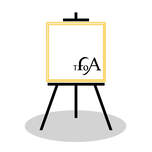Paul Mathieu
Biography
Paul Mathieu was a Post-Impressionist and Luminist painter of landscapes, harbour scenes, interiors and still-lifes. He studied from the age of twelve at the Ecole Normale des Artes et Dessin de Saint-josse-ten-Noode in Brussels while funding his studies by working with a small firm responsible for the decorative works at the Monnaie and Alhambra theatres.
After some years spent struggling to combine paid work with his studies Mathieu got his first break in 1893 when one of his paintings was accepted at the Brussels Salon. The next year one of his works was admitted at the Exposition Universelle d'Anvers and another at the exhibition of the Cercle Artistique at Schaarbeek.
In 1896 Mathieu found work as a teacher at the Academie des Beaux-Artes in Brussels. This finally allowed Mathieu to give up his paid work draughtsman and concentrate more fully on his vocation. This period marked a decisive stylistic turning point in Mathieu's career, abandoning the brilliantly coloured still-lifes of his early career in favour of the plein-air paintings for which he became best known.
The open country of Flanders, the Campine, the Orneau Valley and the Belgian coast were Mathieu's primary sources of inspiration, his paintings characterised by great expanses of blue sky or calm water.
In 1911 Mathieu was jointly commissioned, along with Alfred Bastien, to paint a monumental 'Panorama of the Congo' to be displayed at the 1913 Ghent Colonial Exhibition. This, along with other commissions, helped Mathieu's reputation gradually to grow. While exiled during the First World War his work began to attract the attention of collectors from across the world. Queen Elizabeth of Belgium personally bought one of his works, and the Musée du Luxembourg acquired a group of pictures, and Mathieu received official recognition when he was made Chevalier de la Legion d'Honneur.
After some years spent struggling to combine paid work with his studies Mathieu got his first break in 1893 when one of his paintings was accepted at the Brussels Salon. The next year one of his works was admitted at the Exposition Universelle d'Anvers and another at the exhibition of the Cercle Artistique at Schaarbeek.
In 1896 Mathieu found work as a teacher at the Academie des Beaux-Artes in Brussels. This finally allowed Mathieu to give up his paid work draughtsman and concentrate more fully on his vocation. This period marked a decisive stylistic turning point in Mathieu's career, abandoning the brilliantly coloured still-lifes of his early career in favour of the plein-air paintings for which he became best known.
The open country of Flanders, the Campine, the Orneau Valley and the Belgian coast were Mathieu's primary sources of inspiration, his paintings characterised by great expanses of blue sky or calm water.
In 1911 Mathieu was jointly commissioned, along with Alfred Bastien, to paint a monumental 'Panorama of the Congo' to be displayed at the 1913 Ghent Colonial Exhibition. This, along with other commissions, helped Mathieu's reputation gradually to grow. While exiled during the First World War his work began to attract the attention of collectors from across the world. Queen Elizabeth of Belgium personally bought one of his works, and the Musée du Luxembourg acquired a group of pictures, and Mathieu received official recognition when he was made Chevalier de la Legion d'Honneur.

